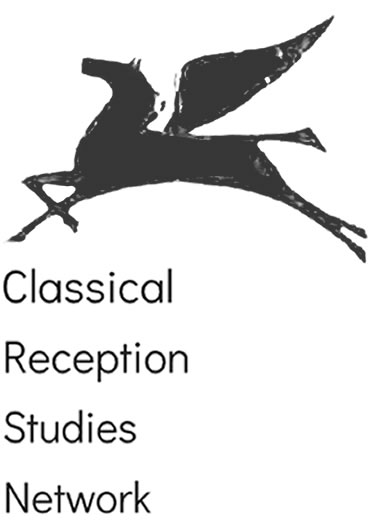By Lekan Balogun
Remarkably, Antigone is also an individual but a very different type for the singularity that this character embodies transcends type, class, sex, or the woman-female-gender sphere, either as a socially-constructed perception or biologically-determined gender classification. Like the Edan, Antigone is also androgynous. In composition, Antigone is also similar to the Edan whose iconic motif reinforces the visual and the metaphysical attributes that are captured by the Ògbóni phrase, “Tako, tabo, èjìwàpò” (Male and female go together). Additionally, Antigone’s emergence from the earth, from the same grave that refuses to open when Ismene knocks at its door, shows that the character represents “continued living.” At the same time, Antigone’s personality reinforces the belief in the earth’s response to the dynamics of change due to various forms of social, political, economic and environmental forces and, more importantly, to “de-femalization” by cultural societies other than the Yoruba.

Certainly, as an aesthetic choice, Fleishman shows through Antigone that gender does not matter when the material and the spiritual come in contact with each other. He also redefines our notion of how society engages with its problems and seeks to find solutions to them. Fleishman fuses Sophocles’ text, Mandisa Vundla’s poetry and SEK Mqhayi’s “Mbambushe” (in its English translation by Phyllis Ntantala) as the linguistic, textual, contextual, formal, historical and iconographic composition that Antigone deploys in the second part of the performance in order to engage sexual and gender-based violence and all other forms of inhuman acts. It is both remarkable and exemplary in its simple yet complex arrangement, one that recalls the story by Ifá of Kankan who invited all kinds of creatures to help him develop his farm. Unknown to him, however, those whose help he sought, fire and water, are also enemies to each other; same as wolf who also wanted the dog to be present. For this task to be accomplished, Kankan needed to forge a difficult, if not an impossible, harmony between the opposites and “sworn enemies.” Tried as he did, Kankan’s efforts came to nothing since anger and hatred between people rarely died out; slightest irritation opened old wounds, the most powerful going for the jugular of the weak: water quenched fire, wolf strangled dog to death, and commotion reigned supreme.
Despite this undertone of sober reflection that Antigone (not quite/quiet) seems to project, there is still room for hope. In short, Antigone fills up the second part of the different idea of individuality that Ismene represents, leaving the remaining part for Tiresias, who occupies the third and final stage.

The Edan figure is tied together by a chain in the manner in which Ismene and Antigone are linked to Tiresias to form the Ògbóni phrase, “Àgbàgbà méjì ló mo ìdí eéta” (Only two elders know the secret of the number three). Whereas it is true that “Òré ò gb’elèta, elèjì l’òré gbà” (A third party can ruin a friendship), it is also ideal to aspire for dynamic power (agbára), if we “Fi eéji kún eéta” (put two and three together) in order to both “make up our mind” and use the power inherent in eéjì (two) for equilibrium, balance, and harmony, and when it is combined with eéta, it helps us to achieve dynamic complementarity and, above all, to gain àṣe (the power to make things happen).
Tiresias constitutes the third of the àtúnwá (reincarnation) in their individual and collective engagement with social anomy, the “Ààrò méta tí kìí da obè nù” (the three hearth stones that [will] never destabilize the soup pot). As the “ààrò méta” (three hearth stones) and the “omo ìyá méta,” Ismene, Antigone and Tiresias form the spectacular children of the same mother(s): Sophocles, Fleishman and Jennie Reznek on the one hand and we should note the male/female balance in this particular group which includes two male and a female; and on the other hand, there are Vundla, Mkhayi and Faniswa Yisa, a combination of two female and a male figure. In this dynamic union of alternating male and female personalities, and through a much deeper reflection on the Yoruba and other cosmologies of West African peoples, we have a metaphoric assemblage of the Earth, Sky and Water in Antigone (not quite/quiet). In this regard Fleishman shows how, together with Ismene and Antigone, Tiresias’ social interactions with post-apartheid South Africa is borne out of a worrisome appraisal of the polity that we can understand through a symbolic, ritual metaphor.
Through Tiresias’ “stories” we could also decipher a paradoxical truth about the “unconventional manner” of the ancient mother, one of maternal generosity and unbridled viciousness, a metaphor for South Africa today. Whereas the country is the proverbial Benevolent Mother whose breasts contain nourishment, both as an earth/ilè that is full of the proverbial “milk and honey” and a “desert” in which hunger induces self-hate and virulent pride in a people whose history includes a dark chapter of dehumanization that negates common sense but induces bloodletting and gory revolt. Whereas the Ògbóni phrase “Omú ìyá dùn ún mu; gbogbo wa la jo nmu ú” (The mother’s breast milk is sweet; we all suck it) advocates a communal sense of belonging, South Africa’s economic and social disparity negates such a commendable principle of collectivism; it is a disparity that invites nothing but sated anger and concealed unhappiness. This can be understood if we paid attention to Antigone’s ringing cry, “Carry the load with us/Free us all!”
Àború, àboyè!

